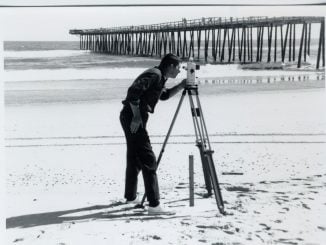DURHAM — Since it was the birth of our first child, my wife, Corey, and I didn’t necessarily have a “normal” to compare the birth of daughter Lucille with, but obviously we knew this wasn’t it. Every process had clearly gone through recent dramatic shifts. Despite all of that, my wife and child passed safely through the life-changing (and creating) process, aided by the capable staff at Duke Regional Hospital in north Durham.
The COVID-19 pandemic has changed virtually every area of life, partly by making every area of life virtual. This is true now for working remotely, Zoom social gatherings, streaming church services, and also, apparently, for birth preparation. The usual in-person birth classes were canceled and the hospital instead sent us links to multiple PowerPoint presentations. These were informative, and we watched them all from the comfort of our couch, but it certainly didn’t replace a live back-and-forth with a health provider or the chance to interact with other local soon-to-be parents.

The hospital tour was also virtual. Thankfully, my wife was born in that same hospital 31 years earlier, also in late August. This and the virtual tour gave us a bit more comfort about how it would all go down — like who to call, when to come in, and what would happen when we got there.
And one morning, soon after we woke up to start our day, the time had come to make use of all these details. Corey had been up much of the night counting her contraction intervals, and when they reached the magic numbers, we called for the go-ahead, grabbed our pre-packed bags and headed to the hospital.
Upon arriving at Duke Regional’s main entrance, we joined an airport-style security line with a nurse at the front taking people’s temperatures and asking them questions about travel and symptoms. We made it through this line, Corey’s contractions getting closer and more painful, and went up the elevator to labor and delivery, which they call “The Birth Place.”
After a quick check in an examination room, they confirmed that, yes, Corey was definitely ready to be admitted. Due to COVID, the hospital only allowed each woman giving birth one “support person,” and thankfully, Corey picked me. A nurse came in wearing a full head-to-toe protective suit and told us she was there to give Corey the dreaded “up-the-nose” COVID test. She did not give me a test, but said if Corey tested positive, I would be presumed positive and not allowed to return if I left for any reason.
Corey quickly passed into the last stages of labor and took an epidural to deal with the pain. But after 3 ½ hours of pushing, Lucille was not joining us. Our doctor came in and broke the news that we had limited options now, and they each came with risks. We could move to a surgery room for a C-section, or we could use a vacuum device to assist Corey’s pushing by pulling the baby’s head towards the exit.
They gave us a few anxious moments to talk over the options and risks, and we decided to go with the vacuum device. The doctor then told us that if the vacuum didn’t work after a few attempts, we would need to move quickly to surgery. It was also likely that the baby would be pulled further down by the vacuum, making the C-section more difficult. But we put our faith in the vacuum device, and said a little family prayer, putting some faith in God too.
And they both came through. After several attempts, and being told it was the last contraction before moving to surgery, our 8-pound little Lucille Elizabeth was pulled into the world against her will at 7:38 p.m. The back of her head was swelled up from hours of labor and the force of the vacuum’s suction, but they assured us it would soon adopt a more normal shape, and it has.
This of course wasn’t the end of the story. We slept in a hospital room for two more nights, have been awake at all hours of the night in the weeks since, and have had to become accustomed to a piercing cry breaking through the former peace of our home. But as any parent knows, these are small prices to pay.
COVID did make this process a bit more impersonal, as all interactions were done from behind either a mask or a screen; and even now that we’re home, virus precautions only allow one of us to go to the pediatrician appointments. But, despite all these barriers and regulations, it couldn’t remove the very personal reality of parenthood and of the support from our family, friends and coworkers throughout.



